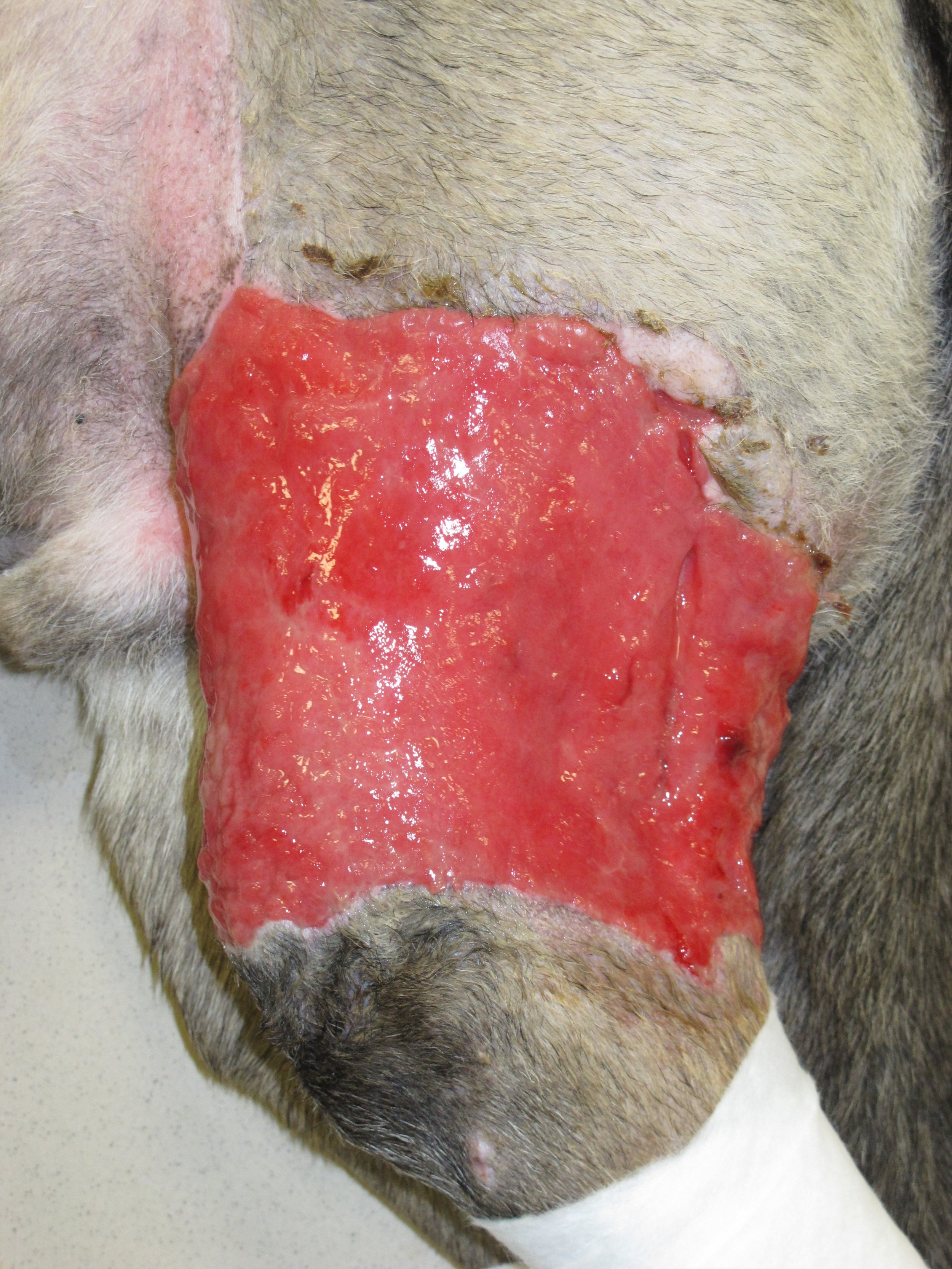SECOND-INTENTION HEALING
Second-intention healing is the process by which wounds heal without surgical intervention (i..e, "naturally"). The wound healing is more prolonged with a more widespread and chronic inflammatory phase, the migration of epithelial cells from the wound edges over mature granulation tissue, and contraction of the wound edges towards the centre of the wound. The advantages of allowing open wounds to heal by second-intention include shorter surgery times, no donor site morbidity, no need for staged surgeries, no risk of cross-contamination between donor and recipient sites, and less costly. The disadvantages include frequent bandage changes for prolonged periods of time (depending on the size and location of the wound), incomplete wound healing, delayed healing, and wound contracture causing joint dysfunction.
Most wounds, regardless of size or location, will heal by second-intention in dogs and cats. In a 2014 clinical study of 31 dogs with soft tissue sarcomas excised with 2cm lateral margins, the subsequent wounds were allowed to heal by second intention. Twenty-nine (93.5%) of the wounds healed completely after a median time of 53 days (tange, 25-179 days). Two dogs required further surgery (skin grafting) to provide complete coverage of the wound (at 98 and 103 days), but one of these grafts failed and second-intention healing of the wound was eventually successful by 202 days. Seven dogs (22.6%) had complications during their wound healing, including presumed infection in four dogs, swelling of the distal limb in two dogs, and bleeding in one dog. Eight dogs (25.8%) had long-term complications, including intermittent disruption of the epidermis (five dogs) and wound contracture with decreased range of motion in the carpus (three dogs).
Case 1 - Desensitization of an Inguinal Flank Fold Flap and Self-Trauma
Case 2 - Dehiscence Following Excision of a Mast Cell Tumor
Case 3 - Traumatic Shearing Wound
Last updated on 6th March 2017













